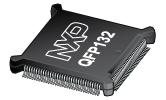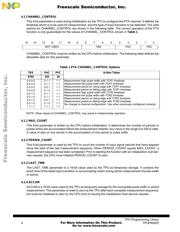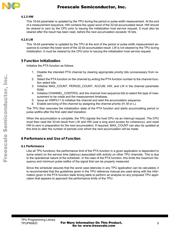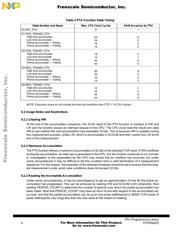下载

Order this document
by TPUPN06/D
APPLICATION NOTE
Programmable Time Accumulator TPU Function
(PTA)
By Richard Soja
1 Functional Overview
This TPU input function measures the high time, low time or period of an input signal over a user defined
number of periods, presenting the result to the host CPU in the form of a 32-bit accumulation.
2 Detailed Description
The programmable time accumulator (PTA) function measures either period, high time or low time of
an input signal over a programmable number of periods. The number of periods over which the mea-
surement is made is selectable over the range 1 to 255. Four modes of measurement are available,
selected via the host sequence bits.
Mode 1
measures total high time over the selected number of periods.
Mode 2
measures total low time over the selected number of periods.
Mode 3
measures total period over the selected number of periods, starting on a rising edge.
Mode 4
measures total period over the selected number of periods, starting on a falling edge.
Figure 1 shows the four operating modes. All four examples in the figure are based on a MAX_COUNT
value of seven. Shaded areas in the bar below each waveform indicate which parts of the waveform are
actually measured. Lightly shaded areas are part of the next measurement.
The output of the PTA function is a 32-bit result expressed in TCR counts. The user can select either
TCR1 or TCR2 as the timebase for the measurement.
The function operates continuously. After the specified number of periods has elapsed, the TPU up-
dates the 32-bit result parameter, generates an interrupt request to the host CPU, and restarts the mea-
surement process.
This function is very similar to the original PPWA function, although it has several major enhancements
over that function:
1. 32-bit accumulation instead of 24 bit.
2. Option of high or low time measurement instead of high time only.
3. Option of starting period accumulation on rising or falling edge instead of rising only.
4. Better noise immunity.
The PTA function does not link to other TPU channels at the end of each accumulation. If this feature
is required, the period/pulse width accumulation (PPWA) function should be used.
Freescale Semiconductor, I
For More Information On This Product,
Go to: www.freescale.com
nc
.
..
Freescale Semiconductor
© Freescale Semiconductor, Inc., 2004. All rights reserved.








